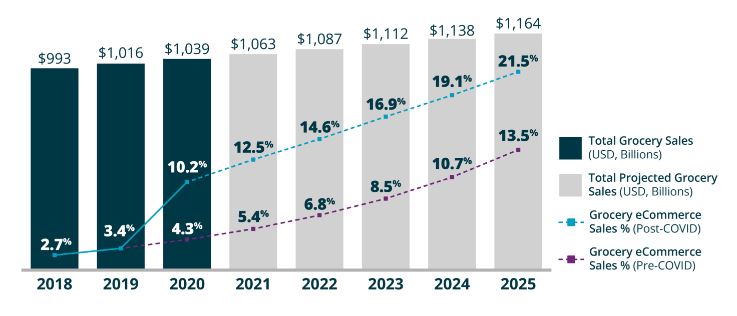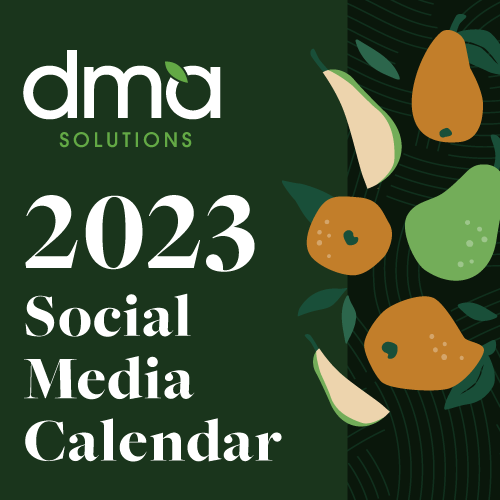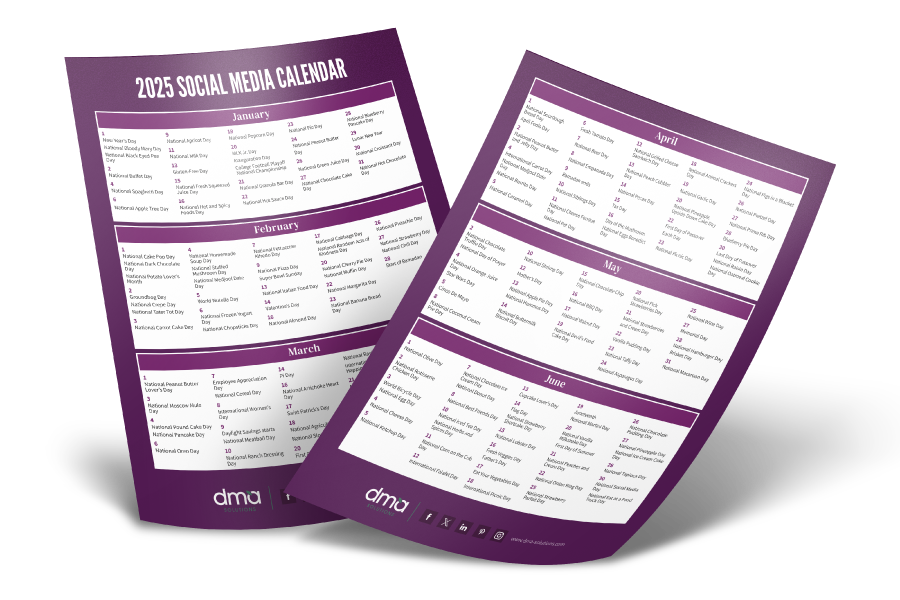It seems like it was just yesterday I was putting the final touches on our blog post featuring marketing trends and predictions for 2020, blissfully unaware of how much all of our lives were going to change in just a few short months. And yet, here we are in July 2021 still wondering about the realities that the last 15 months have set in motion and what’s to come as a result.
The good news is that, despite the pandemic, our 2020 marketing predictions still rang true, and in ways we didn’t even expect! In fact, the need to invest in marketing technology, adopt personalization strategies, and embrace email marketing were only amplified by the realities of COVID-19.
”Change isn’t coming; it’s here.
COVID-19 has brought it at breakneck speed and marketers are feeling it.
When we leave our houses in the near future, consumerism won’t look the same. ”
– Forbes
Last year demanded changes from marketers at a faster pace than ever before, and as we look forward, it’s not just about marketing trends anymore – it’s about marketing REALITIES and the opportunities you have as a result. Here are the top marketing realities you need to continue to heed in 2021 and our predictions about how these will affect fresh produce marketers directly this year.
2021 Marketing Realities & Predictions for Fresh Produce Marketers:
Reality: Fresh Produce remains in the spotlight
Let’s start with some awesome news. If one truly great thing came out of last year, it’s that fresh produce has gotten more time in the spotlight as people seek immunity boosting foods to improve their health.
Prediction: Editors will seek stories about farmers
Editors are latching on to consumers’ increased concern for nutrition and immunity. We know this is happening because last year, our PR team was able to find success with national consumer media like never before. In April of 2020 ALONE, one of the brands we work with garnered 4 product requests from national editors and as a result landed placements in major publications like Women’s Health, Food Network, Eating Well, and Men’s Health.
To find success with editors, ensure your pitch angles accompany the ever changing news cycle and speak to what editors are looking for to share with their readers showcasing how your products meet those needs.
Reality: There will be more online shopping and a demand for convenience
Do shoppers know where they can buy your products? With the rise in eCommerce during the pandemic, more and more fresh food companies are seeking avenues to sell directly to shoppers – whether it’s through your own eCommerce platform or through a third-party service like Gold Belly, Instacart or Amazon Fresh. This was a hot topic of conversation during many sessions at Fresh Summit back in October, and we know many brands are struggling to understand how they can overcome perishable challenges to offer this to consumers.
According to the graph below, grocery eCommerce sales accounted for 10.2% of total grocery sales in the U.S., a 6.8% increase year over year.
 Graph Source: Mercatus
Graph Source: Mercatus
Looking ahead, grocery eCommerce sales are projected to continue to grow in 2021 and beyond, which begs marketers to be present both in-store and online with product and promotion to encourage demand.
Prediction: More produce companies invest to help shoppers find their products
Jumping right into eCommerce may not be for everybody, so here’s what we would recommend for fresh produce companies seeking to offer consumers more convenience when it comes to finding their products:
- Invest in a product locator. Third-party services like Destini work directly with Nielsen and IRI scan data to keep their locator info updated regularly so you don’t have to worry about the headache of trying to accomplish this manually. Many fresh food companies have begun using Destini and in addition to their product locator service, Destini offers some pretty sweet coupon services and they have stellar customer service!
- If the expense of a product locator is out of your world this year, consider adding a page to your website where you list specific retailers where you know your product is often found and available.
Reality: Authenticity, relevancy and inclusivity matter now more than ever
We don’t expect sensitivities around politics, civil rights or the pandemic to subside anytime soon. What does this mean for marketers? We must adapt and make sure we are meeting our audiences where they are. Consumers expect to see brands displaying empathy and showcasing inclusive content going forward.
Prediction: Brands share more content highlighting diversity and social distancing
You will notice this is already taking shape with ads currently on the air elevating minorities and speaking to our current situation in the pandemic.
Do you still have images of large group gatherings or does your blog copy still talk about serving a large group of house guests? It’s time to clean up and clean out your irrelevant content and make sure your messaging and visuals align with consumer needs today. You may need to plan photoshoots this year to capture lifestyle photography that might include smaller groups, distancing or mask wearing to stay relevant with your audience.
Reality: Email marketing is not dead, and is only increasing in importance
According to a recent study, 37% of people say email is the most effective channel for customer loyalty and retention, and 60% of consumers subscribe to at least one promotional newsletter from brands!
During the pandemic, we actually saw email stats like average open rates and click rates go up significantly for our clients, especially when it comes to trade emails.
Prediction: More fresh produce brands explore email marketing strategies, especially to reach trade audiences
In our recent Marketing Matters webinar, we asked fresh produce marketers the following question:
Which of the following areas of marketing do you find most difficult to navigate?
Here are the results:
- Public Relations (35%)
- Influencer Partnerships (30%)
- Social Media (30%)
-
Email Marketing (5%)
Perhaps most produce marketers have a good handle on their email marketing, but from the conversations we’re having, it’s probably not seen as a challenge because not enough of you are doing it!
Fresh produce companies can benefit from focusing on email marketing strategies for both B2B and B2C audiences. Whether it’s connecting with retail contacts about safety protocols, farm updates, or virtual events it’s been an important and powerful tool of engagement and communication when face to face time is diminished.
Reality: Virtual events will continue into 2021
This one is simple: as pandemic numbers surge in the winter months, it’s a reality that we will potentially be looking at virtual events still happening well into 2021 – at least for the first half of the year. But without knowing for sure, how can you set yourself up for success here?
Prediction: Short-form video will be key to success for virtual events
If virtual events have shown us anything, it’s the true value of video.
While long-form video is still valuable, it’s short-form (a minute or less) video content that has become the star in 2020. It’s estimated that somewhere between 80-86% of internet consumption is going to be video in 2021. Video stood out as king when it came to creating engaging and visually appealing content for virtual tradeshows last year. So even if consumer marketing isn’t high on your priority list, you need to be thinking about capturing video content to share with trade audiences.
BONUS Prediction: Produce companies will seek to understand the path to purchase (and more retailers will ask about it)
Are you able to explain how your marketing efforts make an impact on purchase intent or brand loyalty? Successful marketers know how to drive consumers to seek out and purchase their products, and can prove it to their retail customers.
This is why measurable marketing and analytics are so important. Diving into the performance of shopper promotions, email marketing, downloadable content, social media promotions, coupon programs, product locators and more will not only prove the value of your efforts, it will also serve as an important asset in retailer meetings to show why you are a valued partner over your competition.
This is where one of the trends we highlighted in 2019 comes in: the need for marketing technology! Being able to map out a path to purchase for your consumer contacts will require investment in marketing technology like a CRM or “customer relationship management” software. We recommend HubSpot!
If you didn’t get a chance to attend our Marketing Matters webinar on this same topic, we highly recommend you take a look at the deck as you prepare your marketing plans and strategies. You can also listen to the recording for further dialogue about these topics and their importance for 2021. If you need help, we’re here for that too! Just let us know how we can put you on a path to success in 2021 and beyond.
{{cta(‘c51e313a-a875-4361-bbd3-bea78a505011′,’justifycenter’)}}












